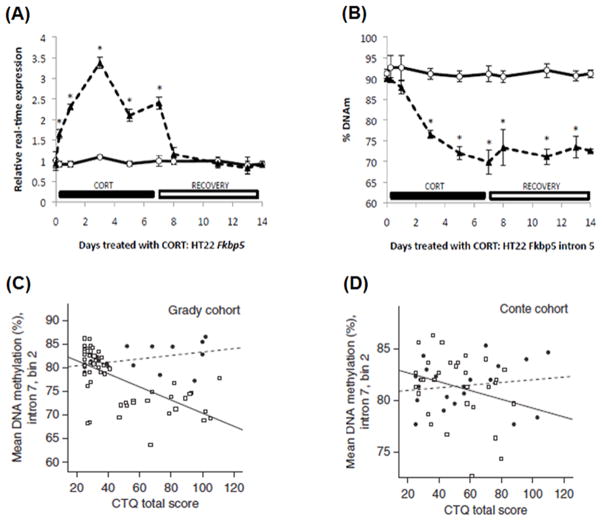FIG. 1.
DNA methylation of the stress-associated gene FKBP5. (A) and (B) Fkbp5 expression and DNA methylation levels following glucocorticoid exposure (Lee et al., 2010). Expression and methylation levels for Fkbp5 in the mouse hippocampal neuronal cell line HT-22. Cells were treated with corticosterone for seven days and cultured in the absence of the hormone for an additional seven days. Cells were harvested for mRNA and genomic DNA to determine the expression levels of Fkbp5 (A) and methylation differences (B). Corticosterone treated samples are depicted by black triangles with dashed lines, while vehicle-treated samples have white circles with solid lines. Asterisks indicate differences that are statistically significant (P < 0.05). (C) and (D). Correlation between DNA methylation at FKBP5 and childhood trauma questionnaire scores by FKBP5 risk genotype in two cohorts (Grady and Conte) are shown (Klengel et al., 2013). (C) Grady cohort. Risk allele carriers exhibited a strong negative correlation between DNA methylation and trauma score compared with carriers of the protective genotype. (D) The Conte cohort shows a similar correlation. Elevated corticosterone levels and increased trauma were associated with decreased DNA methylation.

